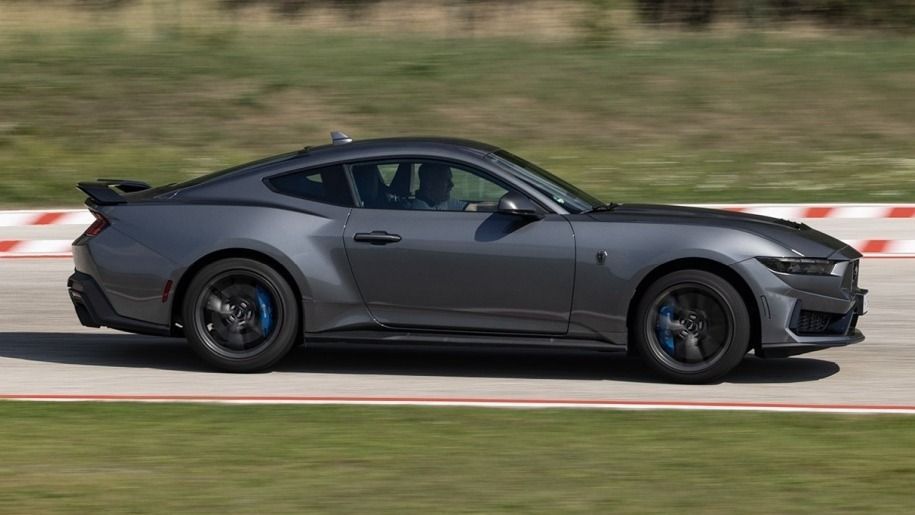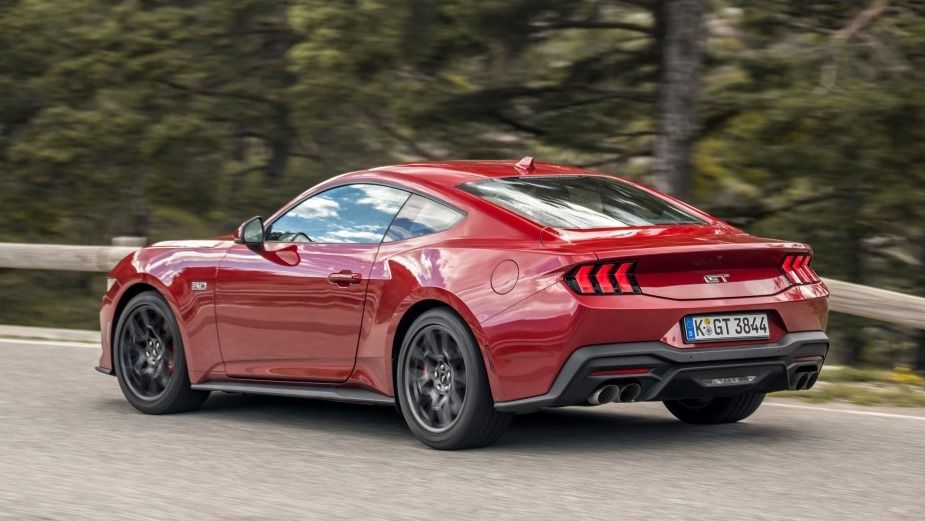For a few years now, it has had to share its name with electric SUVs, in Europe Ford will not have cheap fun with CO2 emissions, and yet the classic petrol Mustang is alive and well. So much so that it has been the world's best-selling sports car for almost a decade, ahead of much cheaper luxury cars (including the Mazda MX-5), so there was no question whether the latest generation, the seventh in a row, would be ready, based solely on the technical solutions that the management and engineering team could discuss. In the end, they decided to further improve the technology of the previous model, but in terms of appearance and services in particular, the Mustang was by no means a dinosaur.

Image: Ford / Ford
1. Familiar yet threatening appearance
It wasn’t a wise idea to radically redesign the iconic design, its silhouette is deceptively similar to that of the previous generation: it features a long bonnet, an elongated roof arch, a sloping B-pillar, and a massive rear bumper, where you can even see the bellies of a wasp; in general, its lines are more angular. The front is completely new, with a vertically split radiator grille and narrow, sinister-looking LED headlights; serious power is hinted at by the grille atop the bonnet, which is used to expel hot air.

Image: Ford / Ford
The rear has also been transformed, and the concave rear wall of the 1967 model has been redesigned, of course with three strip lights, which this time are not connected by a black strip. They offer two body styles, in addition to the classic coupe (fastback) and convertible (convertible), which are available in fewer and fewer brands these days, at least with GT equipment. Those who want the top model of the Dark Horse, which is easily recognizable by its sporty bumpers and rear spoiler, can only opt for a coupe. We can't talk about a small car, its length is more than 4.8 meters.

Image: Ford / Ford
2. Giant screen and special handbrake lever
While outside they voted for evolution rather than revolution at Ford, inside it has been radically transformed, which conservative motorists will not be happy about, but progress was needed in terms of services. Widescreen cinema is now available, which means that the 12.4-inch digital instrument cluster and 13.2-inch multimedia are located in the common room – and in the absence of a separate air conditioning panel, the ventilation system has to be adjusted from here. The SYNC4 system has a medium speed and is generally easy to use, the animations are great and the configuration options are versatile: there is even a retro display with instrument graphics specific to the Fox Body generation (1987-93). Wandering through the recommended track menu item for the closed track, we will pay attention to interesting settings such as the drag racing start program, Laptimer (lap timer), line lock (rubber smoking) and Drift brake, which works with two types of settings.






